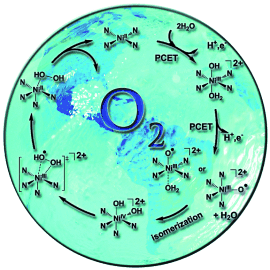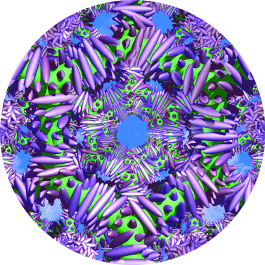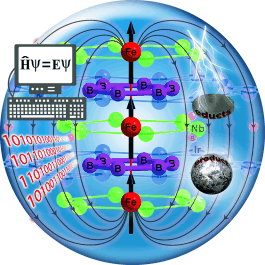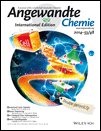Cover Picture: Development of Double-Perovskite Compounds as Cathode Materials for Low-Temperature Solid Oxide Fuel Cells (Angew. Chem. Int. Ed. 48/2014)
Graphical Abstract
Double-perovskite compounds are described by G. Kim and co-workers in their Communication on page 13064 ff. as a new class of cathode materials for solid oxide fuel cells. The enhanced stability of NdBa0.75Ca0.25Co2O5+δ can be ascribed to both the increased electron affinity of mobile oxygen species and the increased redox stability induced by Ca doping into the A site of NdBaCo2O5+δ.

Double-perovskite compounds are described by G. Kim and co-workers in their Communication on page 13064 ff. as a new class of cathode materials for solid oxide fuel cells. The enhanced stability of NdBa0.75Ca0.25Co2O5+δ can be ascribed to both the increased electron affinity of mobile oxygen species and the increased redox stability induced by Ca doping into the A site of NdBaCo2O5+δ.
Water Oxidation
In their Communication on page 13042 ff., Z.-F. Ke, T.-B. Lu, and co-workers report a nickel-based homogeneous catalyst for water oxidation. This catalyst can efficiently electrocatalyze water oxidation at neutral pH in phosphate buffer.1

Liquid Crystals
Two types of liquid-crystalline phases consisting of two or three networks are presented by X. Zeng, G. Ungar, C. Tschierske et al. in their Communication on page 13115 ff. The three-network phase displays permanent chirality even though the constitutive molecules are achiral.1

Boride Magnets
B. P. T. Fokwa et al. report in their Communication on page 13174 ff. a mutual dependency between ferromagnetic iron chains and stacked B6 rings (see picture) found in the new ferromagnetic material, Nb6Fe1−xIr6+xB8.1





